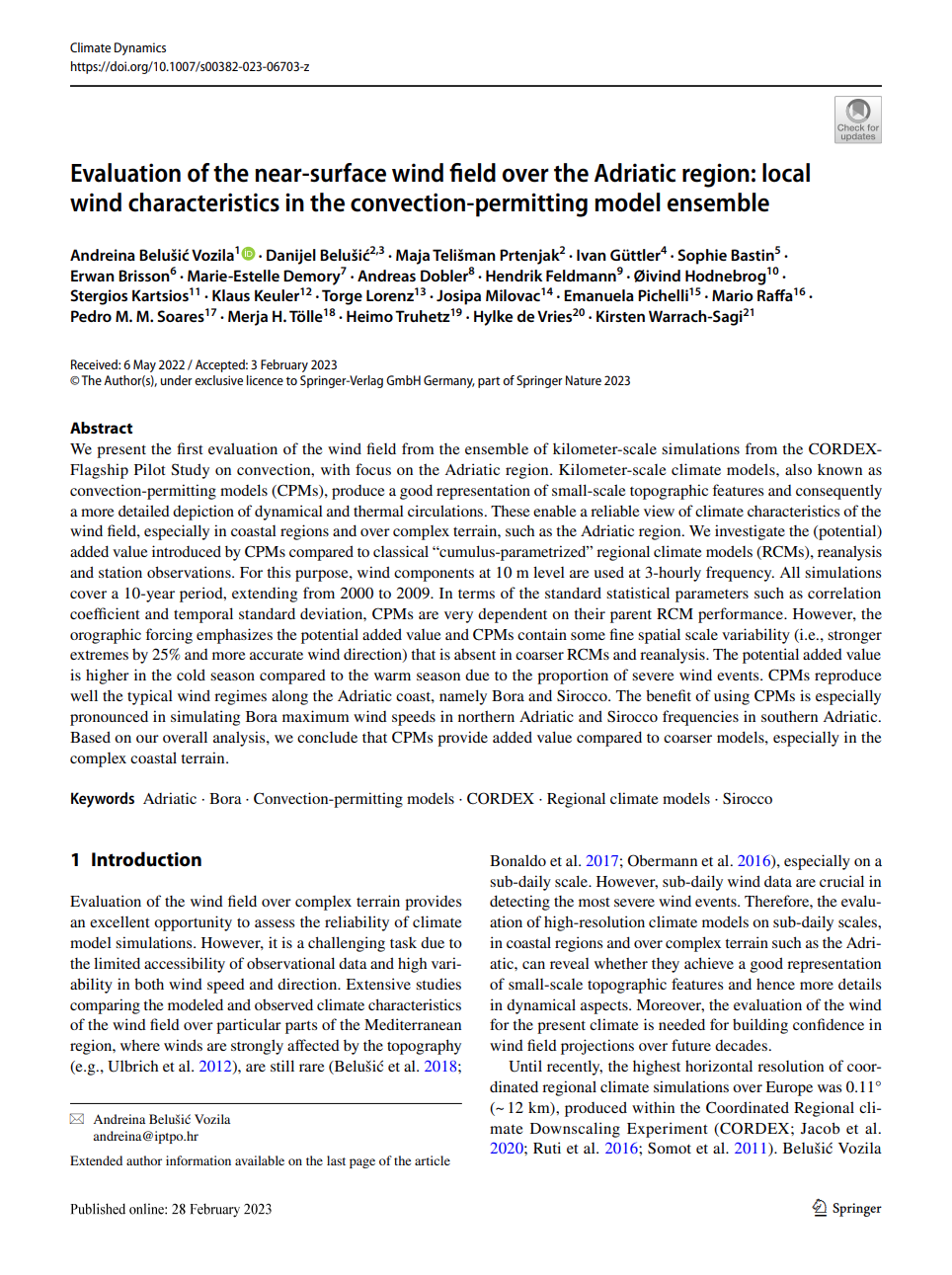We present the first evaluation of the wind field from the ensemble of kilometer-scale simulations from the CORDEX-Flagship Pilot Study on convection, with focus on the Adriatic region. Kilometer-scale climate models, also known as convection-permitting models (CPMs), produce a good representation of small-scale topographic features and consequently a more detailed depiction of dynamical and thermal circulations. These enable a reliable view of climate characteristics of the wind field, especially in coastal regions and over complex terrain, such as the Adriatic region. We investigate the (potential) added value introduced by CPMs compared to classical “cumulus-parametrized” regional climate models (RCMs), reanalysis and station observations. For this purpose, wind components at 10 m level are used at 3-hourly frequency. All simulations cover a 10-year period, extending from 2000 to 2009. In terms of the standard statistical parameters such as correlation coefficient and temporal standard deviation, CPMs are very dependent on their parent RCM performance. However, the orographic forcing emphasizes the potential added value and CPMs contain some fine spatial scale variability (i.e., stronger extremes by 25% and more accurate wind direction) that is absent in coarser RCMs and reanalysis. The potential added value is higher in the cold season compared to the warm season due to the proportion of severe wind events. CPMs reproduce well the typical wind regimes along the Adriatic coast, namely Bora and Sirocco. The benefit of using CPMs is especially pronounced in simulating Bora maximum wind speeds in northern Adriatic and Sirocco frequencies in southern Adriatic. Based on our overall analysis, we conclude that CPMs provide added value compared to coarser models, especially in the complex coastal terrain.


